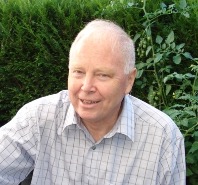
Alasdair Smith passed away in March at the age of 82. After receiving a PhD in physics from the University of Glasgow in 1970, Alasdair began a long career at CERN, working on experiments at the ISR, then on OPAL at LEP and, finally, on LHCb at the LHC.
At the ISR, Alasdair worked on three experiments: R103, R105 and R108, contributing to the construction and set-up of the detectors and associated electronics. In particular, he took part in the design and construction of the cylindrical drift chambers located inside the superconducting solenoidal magnet of the R108 detector.
After the closure of the ISR, Alasdair moved on to LEP, where he was the OPAL liaison officer in the CERN Experimental Support group. Alasdair played an instrumental role in the OPAL experiment throughout its existence. As OPAL’s Technical Coordinator, he piloted the technical project from before any hardware existed right through to when the last piece left LEP Point 6 for disposal. In many ways, he pioneered the concept of what the technical coordinator of a large experiment should do.
Alasdair was competent, efficient, always available to give advice and seemingly never nervous, constantly reassuring and minimising stress for everyone. He remained on top of all the details while still creating an atmosphere of mutual trust: delegating responsibility to team members and supporting all the subsystem technical communities, as well as those involved in detector operations.
Finally, in October 2001, Alasdair joined the LHCb experiment, where he remained until his retirement in December 2007. He joined the collaboration’s management as Resource Coordinator, taking over from Hans-Jurgen Hilke, who had been both Resource Coordinator and Technical Coordinator simultaneously. Alasdair joined at a very timely moment for LHCb, as the experiment entered a phase where the work of Technical Coordinator was rapidly increasing. Alasdair was a fantastic Resource Coordinator, keeping everybody in the collaboration on their toes while not being bureaucratic. He also ensured good relations with the funding agencies, which trusted him. Given the size of the LHCb collaboration at that time – comparable to that of a LEP experiment – his approach was a perfect match.
Alasdair also took advantage of opportunities to relax, bringing his Scottish traditions to CERN. For example, he and two fellow bagpipers symbolically piped the OPAL detector into the LEP Point 6 cavern.
Alasdair will be sorely missed by those who worked with him, as well as by those who had only occasional contact with him. Much sympathy goes to his wife, Christiane, and to all of his relatives.
His colleagues and friends
